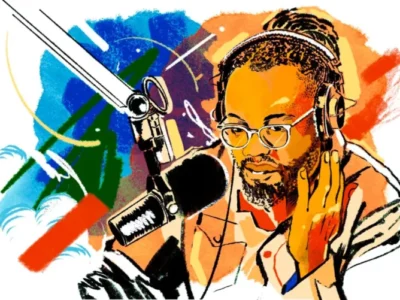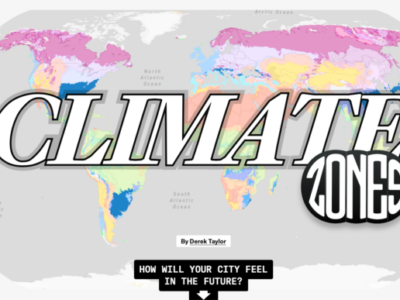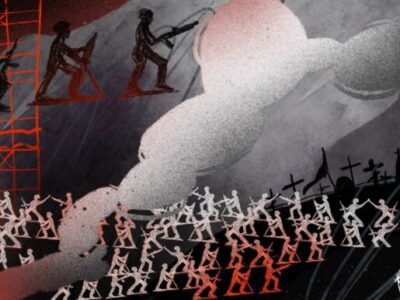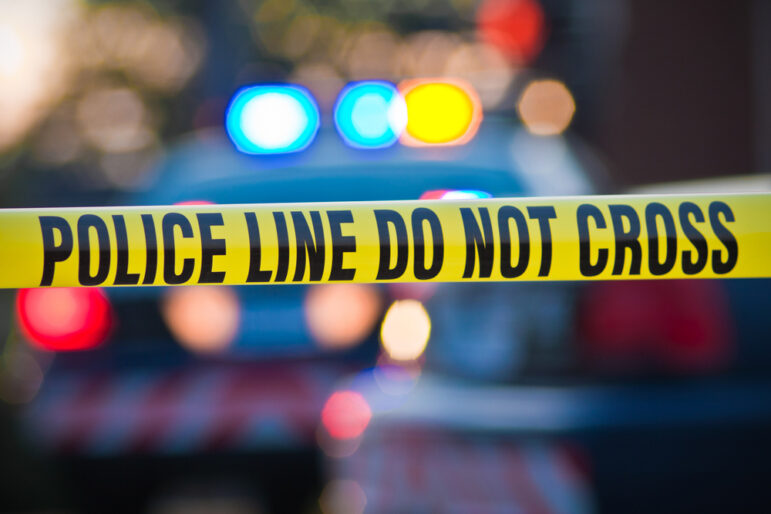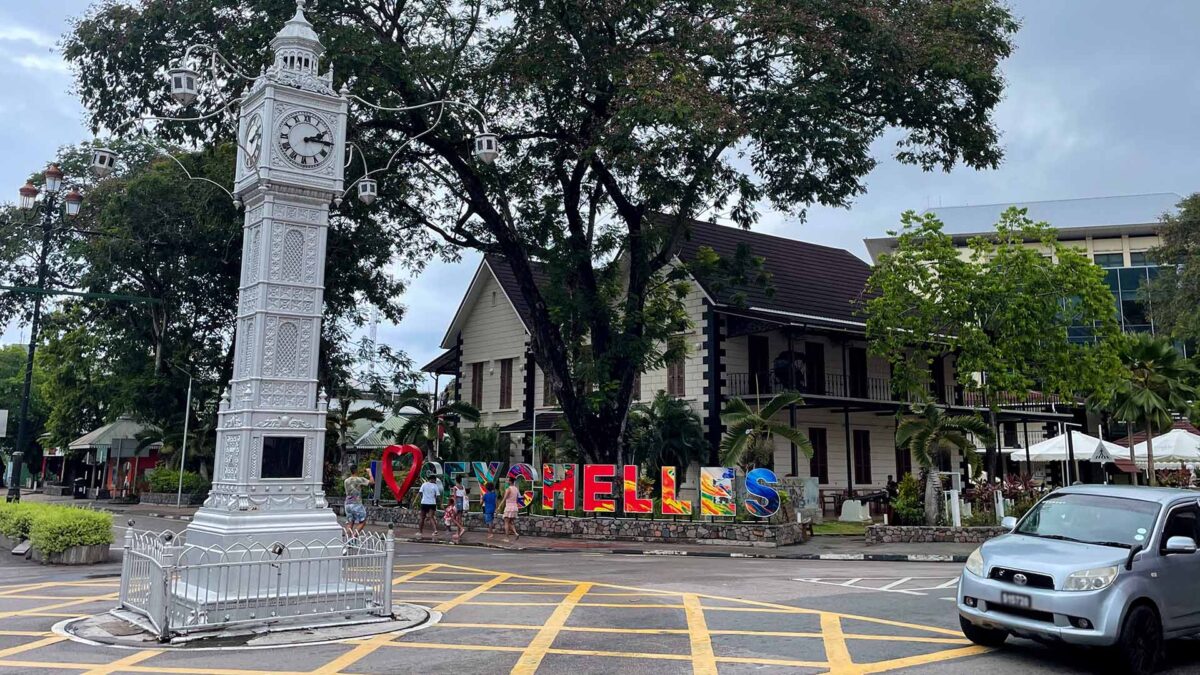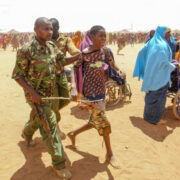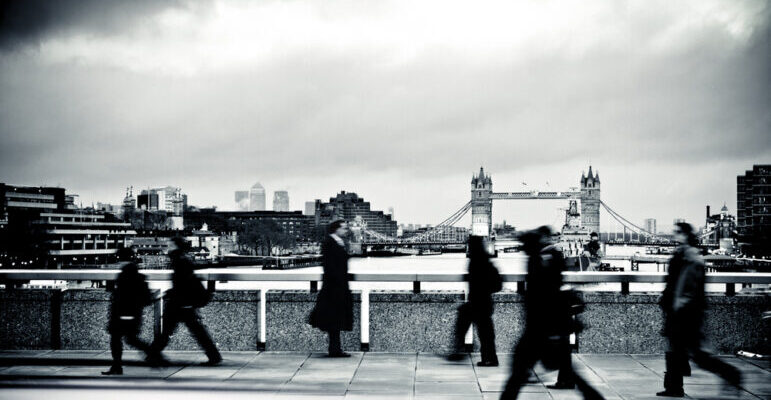
It’s a cold winter’s day in the city of London: a chill wind funnels through the skyscrapers, sunlight glints off the windows, city workers pull their scarves up tight.
I’m among a group of journalists from the UK and elsewhere in Europe, here for an exercise in journalist surveillance — to see if reporters who know they are being followed can spot those who are following them.
We are paired up and told to follow a prescribed route from the offices of Bloomberg to a nearby metro station. From there, we will ride a couple of stops to St. Paul’s Cathedral, then carry on by foot to a nearby mall, where we have to linger for at least 60 seconds. We’re traveling less than a mile but have five waymarkers to clock.
We know, for sure, that we are being followed: the actors charged with stalking us that day were sent a photo of us that morning. They know what we are wearing and who we are with. They even know the route.
Our job is to see if we can notice them and clock their identifiable features, all without their knowing we have spotted them. (If they see us clock them, we’re out — because in a real-life situation, you don’t want to make eye contact with the person who is trailing you.)
It doesn’t sound too hard for a group of 16 or so journalists — among the group are award-winning investigative reporters working for well-known outlets, others are freelance journalists and editors. Some have had hostile environment training before, others have been trained in security techniques. Get a group of journalists together and you’d expect a few might have a talent for spotting small details, or to have gone undercover at some point themselves. As a profession, you’d hope reporters would be good at reading people, situations, scenarios. So how many do you think spotted the spotters? None.
“I thought: ‘It’s a guy or a man, I had that in my head,” says one of the reporters, a woman, who was also being trailed by a woman. My partner and I had spied a few people taking photos in unphotogenic locations — on a nondescript street, outside the tube station — or people who looked a bit suspicious. But we were sure we’d nailed it when two young men followed us onto the train platform and took the same train heading west. Since we were in the last carriage, we got a good view of them leaving the train at the same time as us, dawdling along the platform. So good was our vantage point — and their blind spot — that I even took a photo.
But it turned out they were two other reporters, doing exactly the same exercise. Worse still, I knew one of them, but hadn’t seen his face.
So certain were we in having spotted our tail that we stopped looking for anyone else.
Our real tail — a film producer — dressed in a checkered coat and beanie hat, had happily been following us undetected, undisturbed. She pointed out how my green coat had made me easier to spot. She was wearing what she always wears — and as a result, blended in perfectly. She’d even thought she might bring her dog, since no one ever suspects people walking their dogs might be on a surveillance job.
One pair was surprised that a young man with a long scarf who looked like he was headed straight to an investment bank was following them. Another that it was an older, grungier spotter who you’d never cast as an MI6 agent in a blockbuster film.
As they all came to meet us after, we were taught one of the day’s key lessons — don’t assume you know what the person trailing you might look like.
Spotting a Tail
Among the reporters taking part in the walk is one who fears their latest work may have led to them being put under surveillance. He suspects he was spied upon in the past, and says, given the subjects he investigates, it’s always a concern. “I’m taking all the training I can,” he says. Another knows she has been under surveillance before: She thought she’d never need this kind of training but learned the hard way that even in democracies there can be those who want to track your movements, see who you are meeting.
Running the project today is Frank Smyth, the executive director of Global Journalists Security, which provides hostile environment training and security advice for media workers. As reporters, he says, we need to “think about security in everything you do. There’s a fine line between being aware and being paranoid.”
In the walk-through situation, we were following a prescribed route, but really many of us tread the same paths repeatedly on our way between work and home. From the nearest train or tube station to our favorite cafes, from the route to the office to the way we walk our children to school — it would not take long for a surveillance team to know your key routes, times, and destinations.
Changing your route is one key way to make it harder to surveil you, says Smyth, who also advises reporters who fear they could come under surveillance to develop “situational awareness.”
“Every woman in the room has a pronounced sense of situational awareness — you know if you walk by yourselves in a certain area at night, you learn to be aware of your surroundings,” he explains. Reporters at risk should adopt the same attitude when going about their work, and even their daily lives when working on sensitive projects.
“If you think of an attack cycle, there are hard and soft targets: you want to make yourself a harder target,” he adds. “Their job is to find out who your sources are. Where you live… Don’t make it easy for them.”
While all reporters should be aware of the risks of digital and mobile surveillance, he says, it’s still important to consider the various ways physical surveillance can work. From static surveillance — at someone’s home or workplace — to surveillance on the go. “On foot, public transport, combined, be aware of people and vehicles,” he says.
“The reasons for surveillance might be to gather information or learn about your contacts — that was the goal of [Harvey] Weinstein, or it could be to intimidate contacts, destroy evidence, even to carry out reconnaissance before an attack, abduction, or kidnapping,” he says. “When journalists are murdered there’s usually evidence they were being surveilled beforehand.”
This was the case for Ján Kuciak, an investigative reporter who was killed alongside his fiancee in Slovakia in 2018, an official inquiry found that he had been under surveillance before he was murdered, alongside a number of other reporters.
One 2023 investigation by the Balkan Investigative Reporting Network, based on a survey of reporters in 15 countries in central and southeast Europe, found that “despite new spyware like Pegasus that targets mobile phones, ‘traditional’ types of surveillance, such as wiretapping or physical monitoring, are still the most popular methods being used.” Among those orchestrating the surveillance, according to the report, are “state authorities trying to find out about journalists’ sources or uncover compromising material.”
While its findings were based on all forms of surveillance of journalists, the 2024 Council of Europe report on press freedom in Europe warned that “surveillance removes the necessary protection of journalists’ confidential sources, intimidates journalists, and can deter them from investigating sensitive stories.”
Tips for Journalists
Advice for what a reporter should do if they feel they are under physical surveillance varies, and “that discussion is different if you are in London, DC, or Moscow,” notes Smyth, but in general he says never confront somebody who you think is following you, and avoid eye contact.
“If you are in Syria in the early 2000s and you make eye contact, they are going to abduct you right away,” he explains. “You don’t want to make eye contact.”
If you have a sense you are being followed, he adds, try “scanning” your environment, rather than searching, but casually, so you can’t be detected. “The phone is a good prop, but if you are obvious they will find out.”
Making sure you are not walking around in a quiet, dark, or isolated area is important, and as much as possible making sure you are not alone. “Think about who you are with. It’s much harder to kidnap two people,” Smyth points out. “If you think you are being followed, go into a safe space — a shop or a café,” he said. “In the field, you will have a sense of panic. You’ll have time to breathe, and to see if someone behind you has had to make a stop, too.”
Some final tips from Smyth:
- Perform your own route analysis — review the map of where you need to go — and try and avoid constantly looking down at the map on your phone.
- Notice the abnormal. Be aware if you see the same person one, two, or three times.
- Become situationally aware: try and notice if you feel eyes on you, Be alert — but don’t look like you are alert.
- Gaze, don’t stare if you suspect you are being followed — this will give you time to act before they notice you, giving you an opportunity to analyze the threat.
- Vary your routes to make yourself a harder target.
- If you are sure you are being followed, get off the street. Use Signal to confer with colleagues.
- Note descriptions of anyone you think may be following you: their gender, race, height, age, weight, hair color, clothing style, and distinguishing features. If the person you think is following you is in a car, note the make or model.

